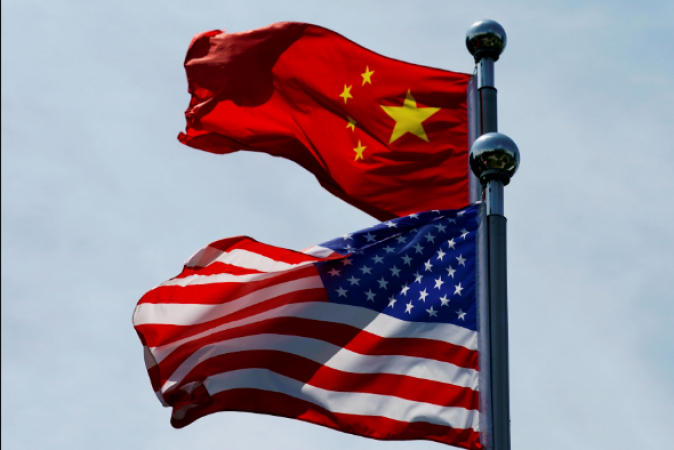
USA: For more than 40 years, the China-U.S. economic relationship has arguably dominated a large portion of the globalisation story. Up until recently, the two countries' economic integration was seen as a win-win collaboration. Chinese poverty reduction, industrialization, and modernization were fueled by the millions of jobs that foreign investments in China created, initially in manufacturing and then much later in services. More than 770 million Chinese people were lifted out of poverty between 1978 and 2021.
China's manufacturing engine generated enormous export revenues, which it channelled into holdings of foreign reserves denominated in US dollars. This helped to maintain the competitive Chinese exchange rate and the desire of American consumers for low-cost imports.
Also Read: Federal Bank raises interest rates on SB accounts, Check Details
Unsurprisingly, Chinese investors (and foreign investors in China) eventually started to tap the comparative advantages of other Asian countries in a greater way as China itself modernised. China's modernization and technological advancement opened up space in the manufacturing narrative for other nations. According to one pertinent statistic, the South China Sea serves as a transit point for more than 60% of global trade by volume and about 13% of global trade by value, demonstrating the region's highly integrated production chains.
Tensions in the China-U.S. economic relationship have existed at least as far back as the late 1990s and early 2000s, when claims that China was engaging in mercantilist behaviour sparked discussions about rebalancing the relationship. At the time, China was charged with manipulating its currency and speeding up the deindustrialization of the US. Instead of severing the connection, one of the objectives at the time was to rebalance the relationship in favour of more American exports to China.
It was economically mutually assured destruction to end the relationship. If the relationship broke down, China's engine of modernization and poverty reduction would come to a grinding halt, and the U.S. economy would plunge into a tailspin if its supply of inexpensive debt and goods dried up.
Also Read: Full strength in SC as Centres notifies Appointment. of Justices Bindal, Arvind Kumar
International economic integration appeared to have peaked by the turn of the twenty-first century, but tensions were also high because populism's seeds had already been sown. The losers of this globalisation process, according to scholars, turned to populist parties and politicians, who gained power on the back of growing inequality, unpredictability, and discontent with the globalisation process.
America was not an exception. Prior to the current era of globalisation, U.S. trade and investment policies showed a strong tolerance for China-U.S. interdependence, trying to rebalance it rather than eliminate it entirely. Beginning in 2016, things began to change as a result of growing populist pressure and anti-China rhetoric. The newly elected administration of President Donald Trump stepped up a variety of retaliatory measures, including sizable tariffs on Chinese imports, starting in 2017 in response to fresh accusations of currency manipulation.
One significant shift from earlier disputes between the two countries is the growing integration of national security concerns with economic issues. The United States increasingly sees China's growing economic and technological dominance as a threat to national security. The United States National Security Strategy, which was required by Congress, mentioned "a new era of strategic competition" in December 2017. The former close economic partner was described as a "adversary," "rival," and a "strategic competitor."
Tit-for-tat trade tactics that involved tariff escalation were quickly replaced by more robust political measures. The U.S. CHIPS and Science Act, passed by the Biden administration in August 2022, promised to increase domestic semiconductor chip production in the United States while reversing China's (and Asia's) market dominance.
In addition, the US implemented extensive export restrictions in October 2022 to restrict China's access to specific semiconductor chips and machinery. The U.S. Federal Communication Commission made a decision the following month to prohibit the import or sale of specific Chinese technology products that it claimed posed security risks to critical infrastructure in the country.
These actions are a part of what many now refer to as the China-U.S. "tech war," which denotes a more serious attempt at decoupling and may prompt a wide range of economic actors—not just in these nations but also in other parts of the world—to reevaluate and recalibrate their involvement in global value chains that also include China.
Also Read: UK and Italy sign historic trade agreement to grow economies and exports
On the Chinese side, the "dual-circulation" strategy was emphasised in the nation's 14th Five-Year Plan. According to the plan, China will continue to be open to the rest of the world (the "great international circulation") while also expanding its domestic market.
Hundreds of millions of people who have been lifted out of poverty over the past four decades thanks to economic modernization are now a part of a thriving middle class in a sizable and expanding domestic Chinese market. The new plan appears to be focused on extending these gains and boosting the nation's independence and toughness.